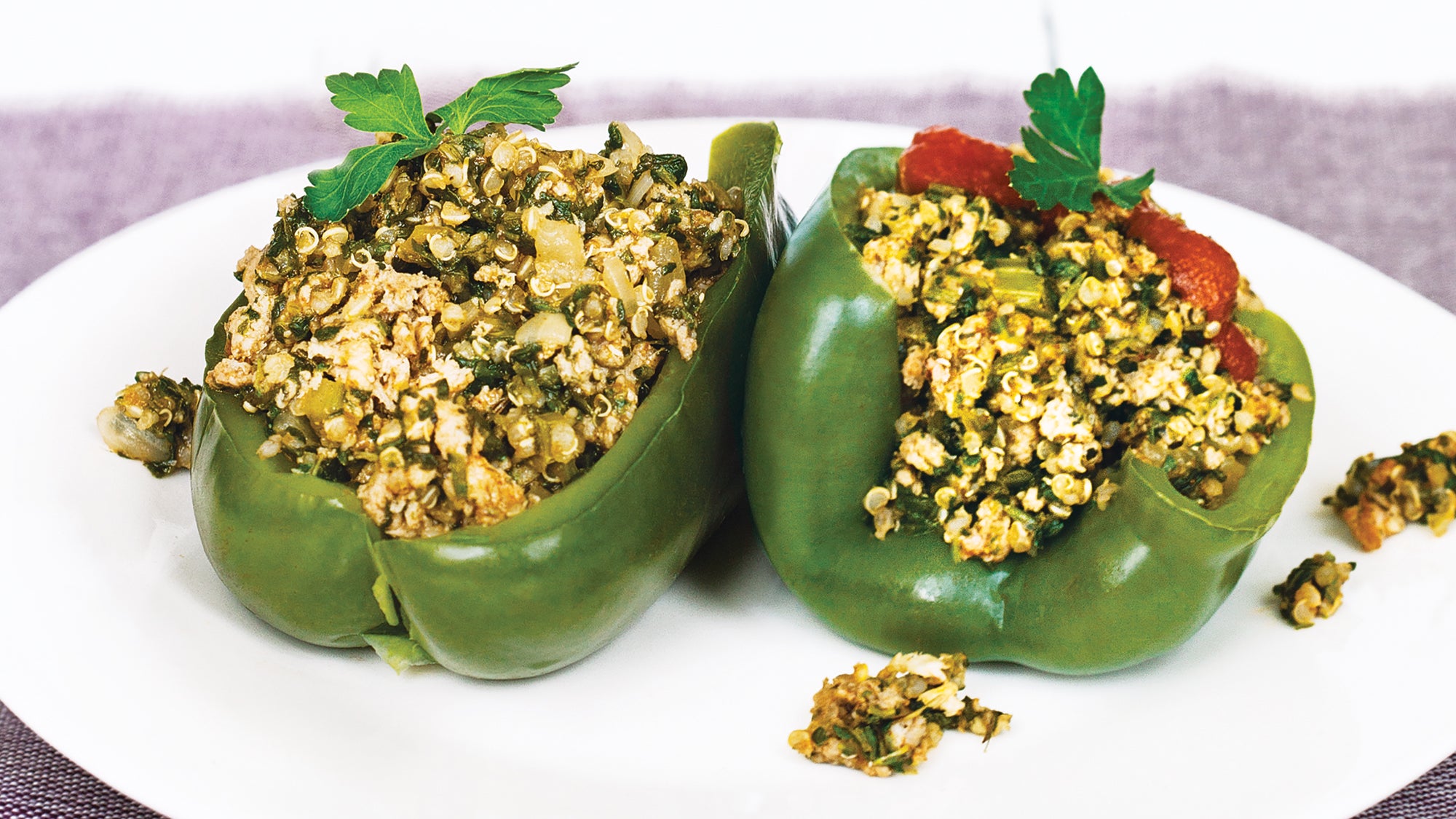Your 2-Week Winter Meal Plan

Chicken quinoa stuffed bell peppers recipe
Winter can often present a challenge when it comes to maximizing energy. With shorter days, darker skies and colder weather, you have to be extra vigilant when it comes to ensuring that your diet supports you with both nutrient-rich foods and variety to prevent boredom. This can be a daunting task, especially if your neighborhood farmers’ market has disappeared until the dewy days of spring. Enter: Clean Eating.
Over the next two weeks, our meal plan will provide you with 1,500 to 1,800 nutrient-packed calories a day. Plus, it’s designed to incorporate a mixture of whole grains, seasonal fruits and vegetables and lean proteins at frequent intervals throughout your day. And last, but certainly not least, the complete shopping lists and quick and healthy recipes will help you get organized and minimize the chance of poor dietary choices that can result from a busy schedule or lack of planning. Ensuring that you have a multitude of clean food choices on hand will seal your success and allow you to better enjoy the beauty this season has to offer.
Prevent Winter Diet Pitfalls
Do you find sticking to a clean diet during winter months a bit more difficult? Is it the cold weather that demands hot chocolate? Or is it that bulky layers are such good camouflage for extra pounds? Here are some strategies to keep “lose 10 pounds” off your to-do list:
Eat foods low on the glycemic index
“Winter vegetables such as pumpkins, yams and potatoes tend to have a higher glycemic index (GI) than summer produce such as celery, cucumbers and lettuces,” says Ashley Koff, a Los Angeles–based registered dietitian. Foods with a high GI cause a rapid rise in blood sugar (glucose) levels, which causes a spike in insulin that results in fat storage. Instead, fill your plate with dark leafy greens such as mustard greens, kale and Swiss chard – all of which have low GI values, and are at their peak during chillier months. f you’re not keen on eating your greens raw, try them sautéed. Give our Spinach & Chickpeas, above, a taste.
Add protein early
While this is important year-round, with busy holiday schedules and shorter days, you may find yourself scrimping on morning nutrition. A study published by the Journal of the American College of Nutrition suggests that adequate protein from a source such as eggs does more than just fill your belly; it induces greater satiety and can significantly reduce short-term food intake. Therefore, the right breakfast can help you maintain your weight through even the busiest of days…and seasons.
Keep an eye on comfort foods
With less sunny hours, your stored serotonin (the “feel-good” brain chemical) starts to decline. Your cravings for high-carbohydrate comfort foods are your brain’s plea for more serotonin. “Without knowing why, you may be more easily tempted by rich meals and fattening treats as the temperatures drop,” Koff says. Opt instead for a variety of nutritious whole grains, seasonal greens and protein-rich legumes for a hearty meal at the end of a winter’s day.